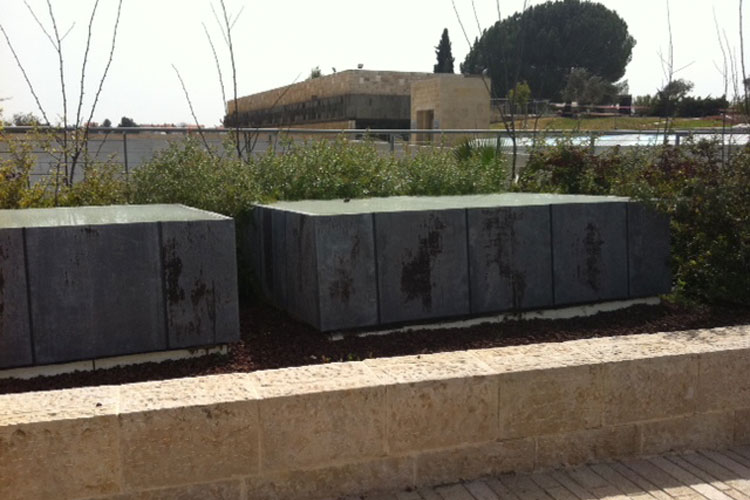Israel:Symbols of destruction: Unterschied zwischen den Versionen
K (hat „Symbols of destruction“ nach „Israel:Symbols of destruction“ verschoben) |
|||
| Zeile 15: | Zeile 15: | ||
A project by the [http://www.goethe.de/ins/il/lp/deindex.htm Goethe-Institut Israel] | A project by the [http://www.goethe.de/ins/il/lp/deindex.htm Goethe-Institut Israel] | ||
| − | Author: [[Gisela Dachs]] | + | Author: [[Israel:Gisela Dachs (Author) | Gisela Dachs]] |
| − | Photos: [[Noa Ben-Shalom]] | + | Photos: [[Israel:Noa Ben-Shalom (Photos) | Noa Ben-Shalom]] |
Version vom 12. Dezember 2012, 16:06 Uhr
The rock faces, which are up to nine metres high in places, symbolise ruins, the remains of the destruction. The arrangement of the names is organised according to the geographical borders as they were in 1938 and outlines a map of Europe and Northern Africa. All the communities are listed in which there used to be more than a dozen Jews and where there were community services.
Each group of rocks forms an independent unit: a particularly large group of course commemorates the once-thriving Jewish communities in Germany. Visitors can find many familiar place names here – as a memorial to all the small Jewish communities of whose existence they are sometimes not even aware nowadays. Differently-sized letters provide information as to the size the communities once were.
Anyone walking through this labyrinth of rocky slabs feels small, trapped and in awe of this lost world.
The following inscription is shown at its entrance: “This memorial commemorates the Jewish communities destroyed by Nazi Germany and its collaborators, and the few which suffered but survived in the shadow of the Holocaust. For more than one thousand years, Jews lived in Europe, organizing communities to preserve their distinct identity. In periods of relative tranquillity, Jewish culture flourished, but in periods of unrest, Jews were forced to flee. Wherever they settled, they endowed the people amongst whom they lived with their talents. Here are their stories.”German Traces in Israel
A project by the Goethe-Institut Israel
Author: Gisela Dachs
Photos: Noa Ben-Shalom
